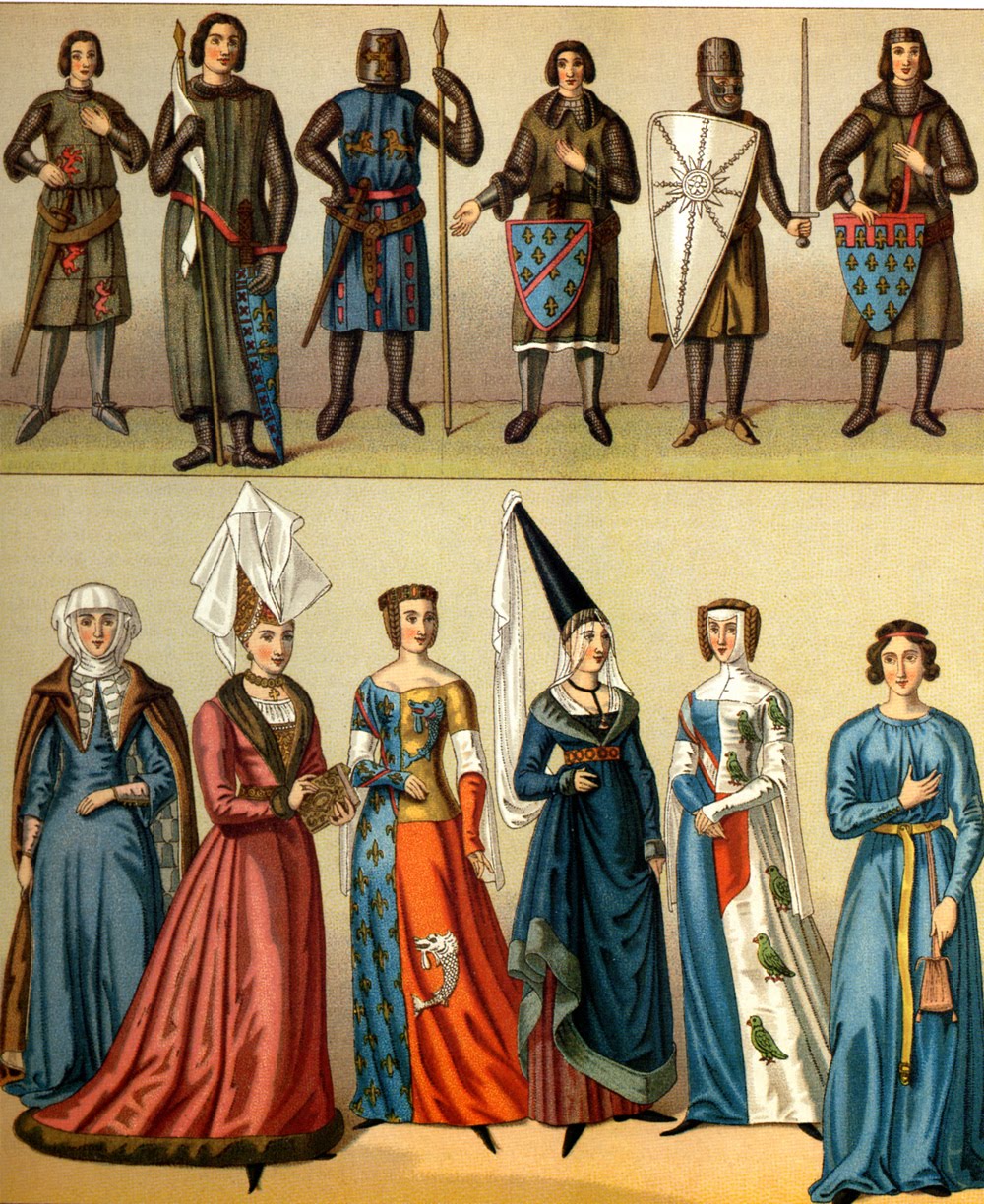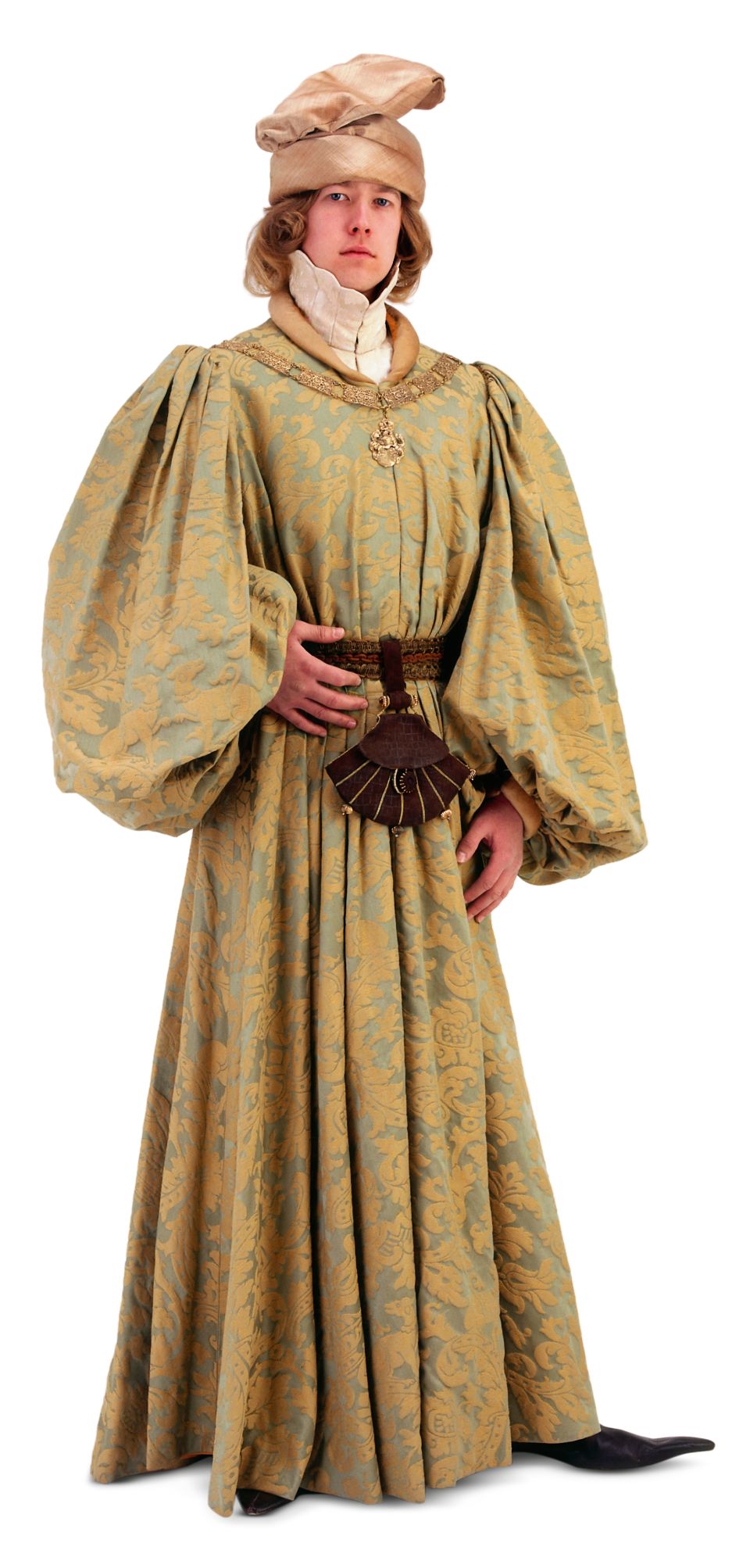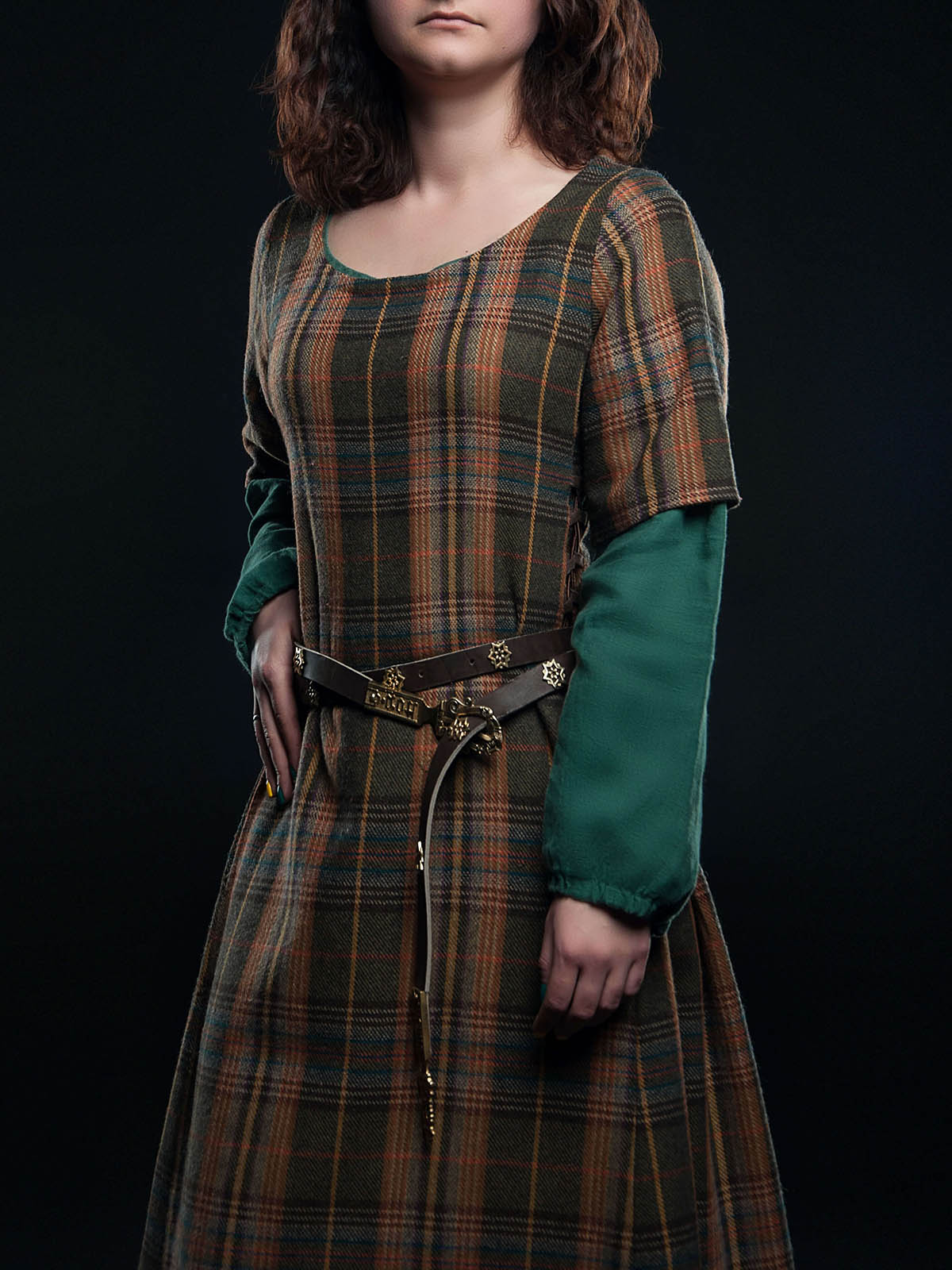
Fashion History of the High and Late Middle Ages Medieval Clothing Bellatory
Medieval women of the lower classes commonly wore wool, linen and sheepskin clothing. Velvet, fur, silk and cotton were common materials used in upper-class medieval women's clothing. As trade with the rest of the world increased so did the availability of different women's clothing materials. Medieval noble women often wore a full-length.

Pin on Medieval Fashions
Silk. Luxurious and costly, silk was used only by the wealthiest of classes and the Church. Hemp. Less costly than flax, hemp and nettles were used to create workaday fabrics in the Middle Ages. Though more common for such uses as sails and rope, hemp may also have been used for aprons and undergarments. Cotton.

Historical Fiction Resources Fashion in the Early Middle Ages
Fashion for Middle Class Women in The Medieval Age. The clothing of the Middle Ages, like everything else was decided by the pyramid of power. The pyramid of power was the Middle Ages Feudal System. Medieval clothes provided information about the rank of the person wearing them. From the 11th through the 14th centuries, medieval clothing.

Women Clothing Ideas Women's Clothing Middle Ages
These pictures (above) show the costume worn in the early medieval period by the rich. The man is wearing a woollen tunic, belted at the waist that has been embroidered around the hem and sleeves. Over this he has a woollen cloak fastened with a brooch. The man's wife is wearing a woollen dress, tied at the waist over a white linen underskirt.

The clothing and different ranks of people in the Middle Ages. Medieval ages, Medieval england
Medieval Women's Clothing Middle Ages clothing and fashion, including the Medieval Women's Clothing, like everything else was dictated by the Pyramid of Power which was the Middle Ages Feudal System. Medieval clothes provided information about the status of the person wearing them. The clothing and fashion during the Medieval era of the Middle.

Middle ages clothing on Pinterest Middle ages, Middle age style and Medieval fashion
Women, Fashion, and the Middle Ages: 1300-1500. Images from the Luttrell Psalter (14th Century) and the Queen Mary Psalter (14th Century) Long, draping, formless garments give way to tighter, more form fitting women's dress. The changing of silhouette in women's fashion is immediately apparent when looking at a timeline of the middle ages.

Medieval Fashion Facts Medieval Costumes DK Find Out
Women's Clothing in the Middle Ages. In the fascinating world of the Middle Ages, medieval fashion played a significant role in defining the social status and identity of women. The clothing of medieval women was influenced by various factors, including their social status, occupation, and the prevailing fashion trends of the time.. Introduction to Medieval Fashion

How Did People Make Fabric in the middle ages and How Did They Color It. Middle ages clothing
Medieval Dresses, Renaissance Dresses, and Medieval Wedding Dresses Pearson's Renaissance Shoppe is your source for beautiful Medieval Dresses and Renaissance Dresses. Spanning the Dark Ages to the times of Pirates ruling the seven seas, our Renaissance costumes for women are authentic and comfortable. But we shouldn't get caught up with just medieval knight armor or pirate wench costumes.

Fashion History of the High and Late Middle Ages Medieval Clothing Bellatory
Womens - Middle Ages Clothing. Women of the lowest class wore shapeless dresses made out of cheap woollen cloth. The dresses were always basic colours like off white, grey, brown and red. Over their dresses they wore a shawl which hung from the shoulders down to the knee. Women also wore wimples to cover their hair, neck and ears.

Middle ages women's clothing Medieval clothing women, Clothes for women, Middle aged women
In the Middle Ages, ladies wore multiple layers of clothing, including a hose, a long underdress called a chemise, and a tunic or kirtle over the chemise. Noble women's dresses were made from fine.

DeviantArt More Artists Like 1872 Trouville in spring by AprilMo Medieval clothing
A look inside Eleanor de Montfort's wardrobe, and why it was important for a 13th-century countess to dress extravagantly and beautifully. People in the Middle Ages liked to layer up. Including underwear and outerwear, an everyday outfit regularly consisted of at least six different garments. There were three main pieces: a tunic, surcoat.

Middle ages women's clothing
The Early Middle Ages, once known as the Dark Ages or medieval times, refers to that period in European history after the fall of the Roman Empire. When the Roman Empire fell in 400 CE (or AD), the once-unified continent fell into disarray. Few images of clothing are left to us of that period, and real information is scanty at best.

Image Ancient_Times_RomanChristian.JPG fashion history LoveToKnow Fashion history
In the High and Late Middle Ages, European clothing began to evolve into what we think of today as fashion. The cut, shape, style, and decoration of clothing changed at a much faster pace than in the Early Middle Ages (sometimes known as the Dark Ages), when styles varied little over time. While we think of fashion changes occurring from year.

Medieval peasant woman. Double click on image to ENLARGE. Medieval peasant, Medieval peasant
For womens medieval clothing expertly handmade with incredible detail and elegance, choose Your Dressmaker. From medieval peasant to queen, we carry the Renaissance dresses, medieval cloaks, historic corsets, petticoats, chemises, and medieval gowns you need, custom tailored to your unique size. Let Dressmaker help you transform into the character of your dreams for your historic reenactments.

DevilInspired Medieval Dresses March 2013
English medieval clothing. The Medieval period in England is usually classified as the time between the fall of the Roman Empire to the beginning of the Renaissance, roughly the years AD 410-1485. For various peoples living in England, the Anglo-Saxons, Anglo-Danes, Normans and Britons, clothing in the medieval era differed widely for men and.

Pin auf Costumes
Women who were not wealthy or part of the nobility class also wore dress-like tunics, or kirtles. Their kirtles were made of wool or undyed linen. Most women wore a shirt beneath their tunic. Sumptuary laws of the time prevented the poor from dressing fashionably. These laws determined that the poor could not wear expensive veils, silver.